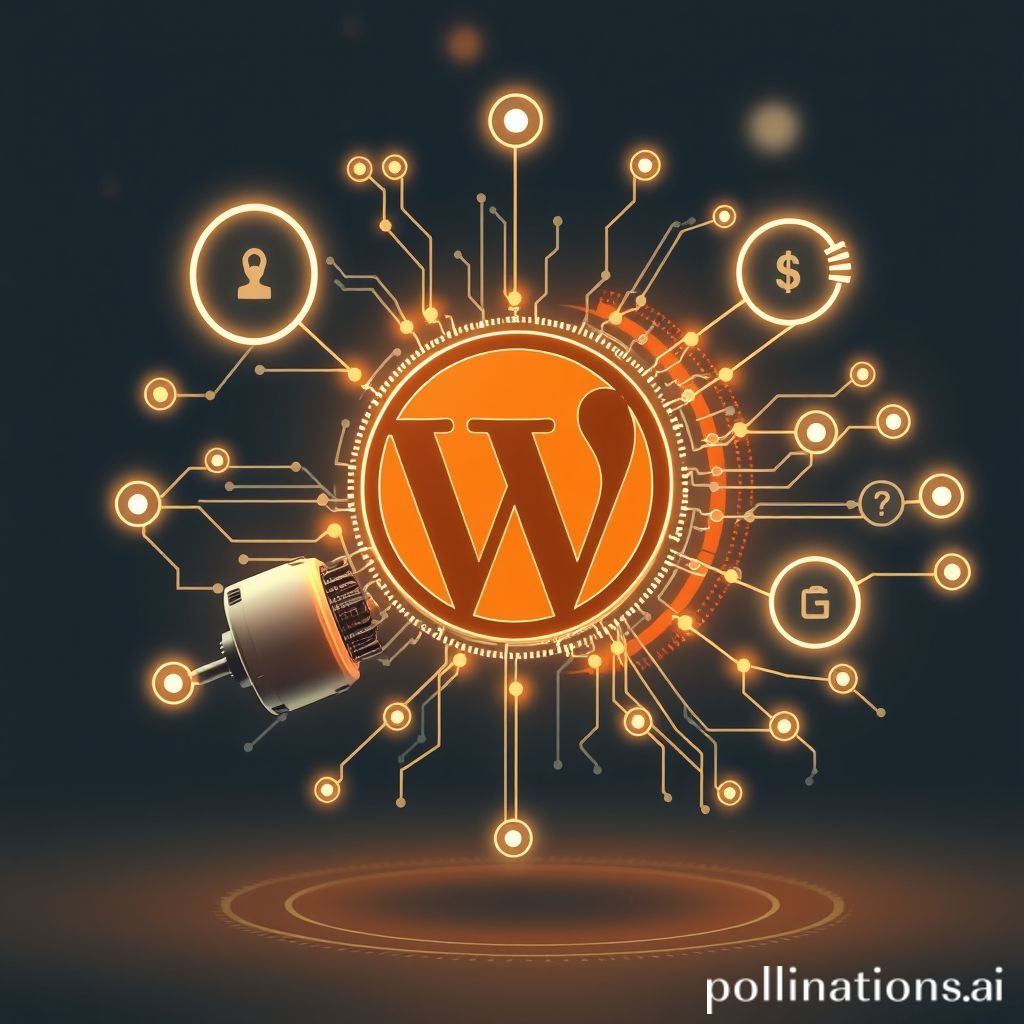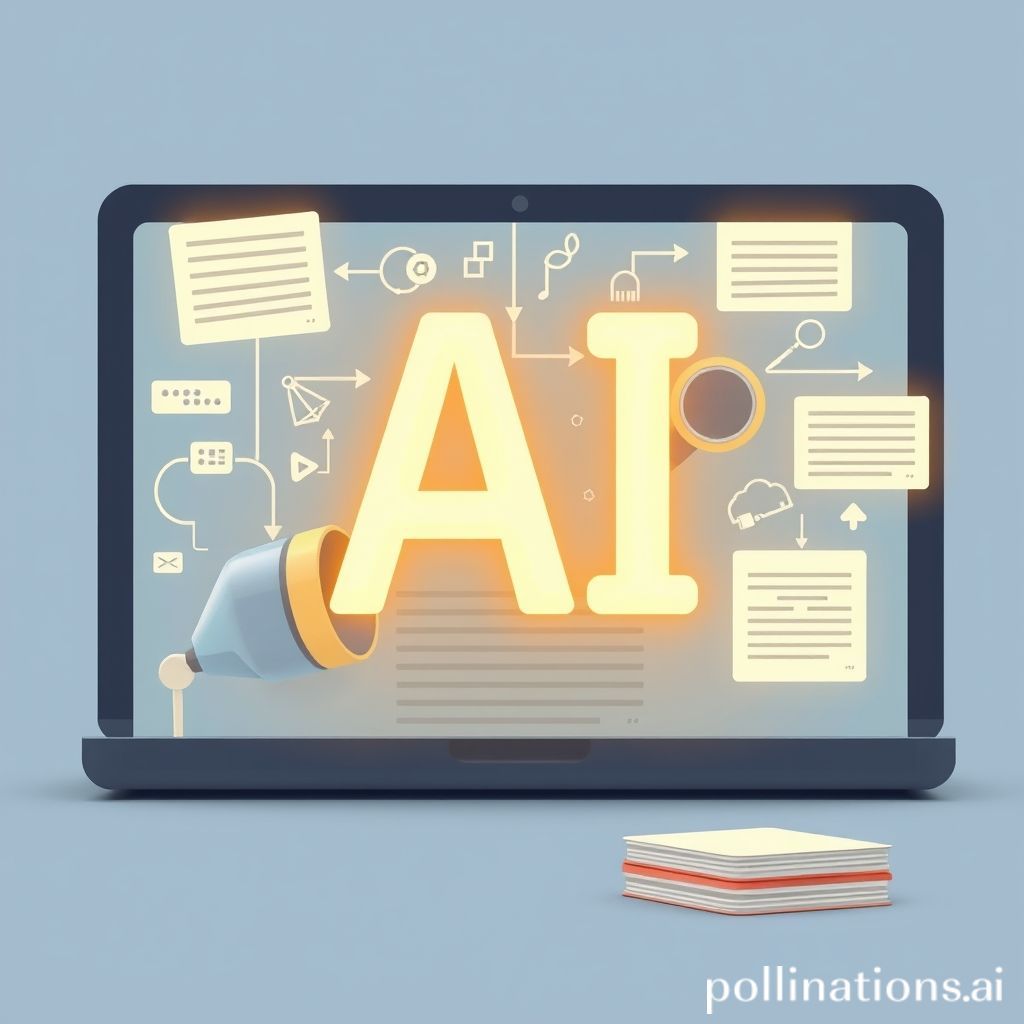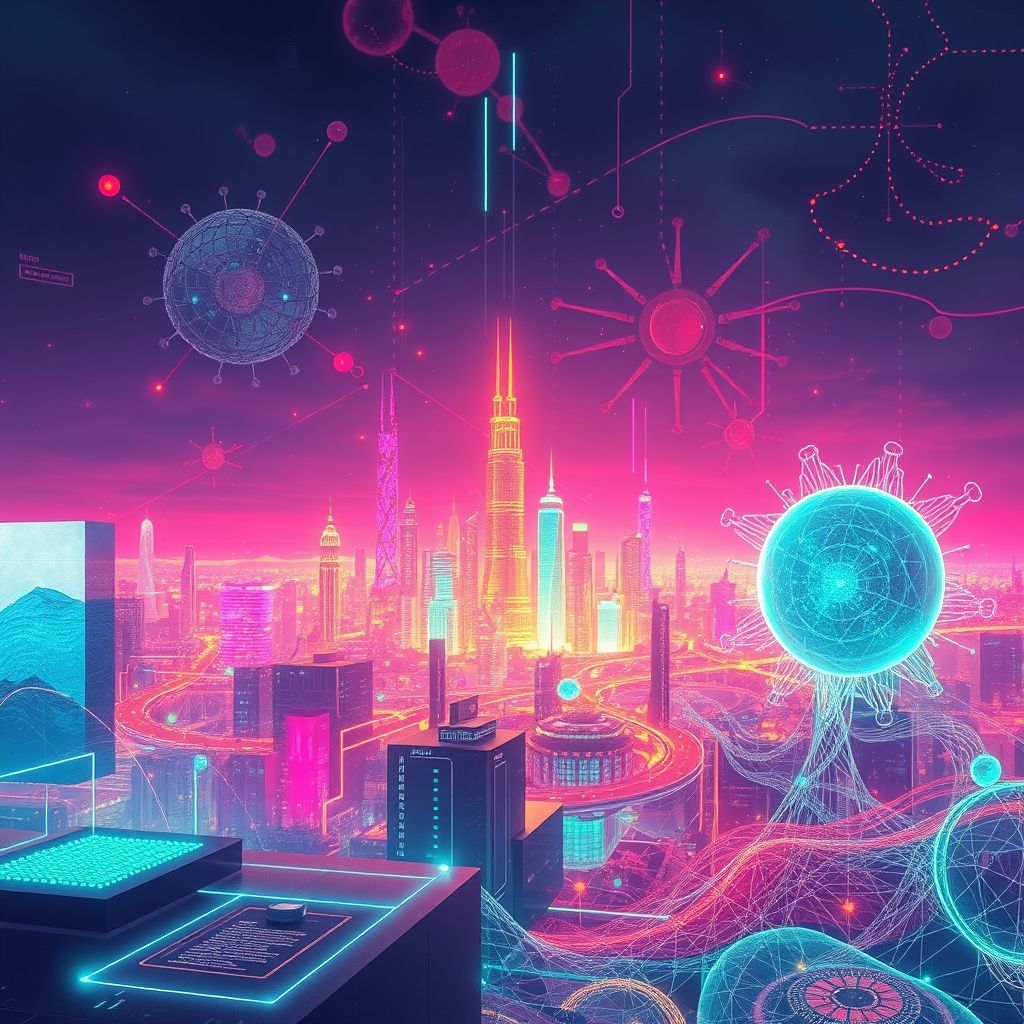Table of Contents
- Introduction
- The rise of AI-powered tools in content creation: How smart is too smart?
- AI content generators: Are we letting robots steal our writing jobs?
- AI-powered plugins for WordPress: Enhancing your website without lifting a finger
- Automated workflows and AI content writer SaaS: Can they save us from the 9-to-5 grind?
- AI writer vs. human creativity: Who wins the wordsmithing showdown?
- Auto-blogging with AI-generated articles: The ultimate lazy blogger’s hack
- Optimizing content with AI recommendations: Because humans apparently need a lot of help
- The future of AI-generated content: Should we panic or embrace our new overlords?
- Conclusion
- Frequently Asked Questions
Introduction
Imagine a world where engaging, high-quality content is produced at the touch of a button, with writing that reads as if it were crafted by the world’s top authors. As we stand on the brink of a new era in technology, artificial intelligence is rapidly proving to be a game-changer in the realm of content writing.
This cutting-edge technology is not just a futuristic concept; it’s a reality that is being embraced by businesses and creators alike. But what does it truly mean for the future of writing? Can machines really replicate the creative flare, nuanced understanding, and emotional depth that a human author brings to a piece?
Join us as we delve into the fascinating realm of AI-powered writing. We’ll explore how this technology is transforming content creation, the possibilities it unlocks, and the profound impact it could have on writers and industries worldwide. Is AI the future of content writing, or just a tool to augment human creativity? The answer might surprise you.
The rise of AI-powered tools in content creation: How smart is too smart?
Once upon a not-so-distant time, AI seemed like the stuff of science fiction. But lo and behold, here we are in an era where AI-powered tools are sipping coffee alongside us, churning out sentences faster than you can say ‘artificial intelligence’. The rise of these smart tools in content creation feels like watching a magician pulling rabbits out of hats. Yeah, it’s that magical—and just as baffling.
Imagine a world where writers are seen as sculptors, and words are their clay. AI steps in as a co-sculptor, spinning discs of ideas, sometimes shaping things beyond the original vision. There’s an irony to this evolution, as writers tap away at keys, only to find a digital spirit ready to lend a hand, or perhaps lending too many.
With clever software crunching data, suggesting synonyms, organizing thoughts, and predicting trends, AI in content creation can be both a poet and a prophet. But with all this dazzling efficiency, comes the big question—how smart is too darn smart? As the keyboard clatters like rain, there’s a little foreshadowing mixed in, hinting that somewhere along the line, the balance between human creativity and AI assistance might teeter.
AI content generators: Are we letting robots steal our writing jobs?
Picture this: a world where metallic minds weave words while the ink-stained hands of human writers wonder, ‘Are we letting robots snatch our pen and paper dreams?’ AI content generators, those digital scribes, are marching onto the writing scene faster than a speeding bullet. It’s like when the first automobiles hit the streets, and folks feared the demise of good ol’ horse-drawn buggies.
With a blink of an eye, AI can craft a tale or an article, leaving us mere mortals in the dust. But hang on a tick! Sure, they can churn out copy quicker than you can say ‘Jack Robinson,’ but isn’t there a sense of irony in machines trying to mimic human sentiment? A touch of poetic suspense as we ponder if this is just the prelude to something greater?
For all its bells and whistles, AI still can’t crack a witty joke or share a heartfelt anecdote from Grandma’s famous cookie debacle. While the high-tech hustle and bustle might make our palms sweat, there’s no need to sound alarms just yet. In this unfolding narrative, the pen is still mightier, for now, and it seems the chorus of human creativity won’t be silenced so easily.
AI-powered plugins for WordPress: Enhancing your website without lifting a finger
Oh, the wonders of AI! Imagine your WordPress site running smoother than a sand dune, all thanks to AI-powered plugins. You don’t even need to break a sweat. These digital helpers are like that trusty friend who always has your back, without expecting anything in return but your gratitude. With a flicker of silicon magic, plugins can optimize your content, boost SEO, and ensure performance is as snappy as a whip.
Take Jane, a small business owner who once found herself bogged down by the nitty-gritty of website management. She discovered AI plugins and—voila—her site began humming like a happy bee. Simple, right? These plugins act like a lighthouse, guiding her through the rocky shoals of digital marketing. One moment her site was an underdog, and the next, it was a roaring success.
AI plugins can even predict what your audience craves, fine-tuning your content strategy like a maestro crafting a symphony. Whether it’s sprucing up your SEO or giving a nudge to your social media game, these plugins, with their whispering algorithms, can enhance your website’s appeal without you lifting a finger. Isn’t that just the bees’ knees?
Automated workflows and AI content writer SaaS: Can they save us from the 9-to-5 grind?
Ah, the 9-to-5 grind—it’s like the ever-present shadow lurking over our daily lives. But hold your horses! In trove the glimmering knights of our modern age: Automated workflows and AI content writer SaaS. They’re here to save the day, or at least make those endless work hours a smidgen more bearable. Imagine the convenience: like a well-oiled machine, automated systems whirr in the background, picking up the slack and freeing you up for what truly matters. Just like a trusty sidekick, AI content writers take care of the nitty-gritty, crafting words while you sip on your coffee. Some say it’s like having a personal writing assistant who never sleeps, never complains, and certainly knows its grammar. But, oh, the irony! While machines promise freedom, they also weave a new narrative—our reliance on tech deepens, leaving some of us pondering the future of human creativity. As this brave new world unfolds, one wonders: Are we inching away from the daily grind, or merely swapping it for a different kind of race? Perhaps only time will tell.
AI writer vs. human creativity: Who wins the wordsmithing showdown?
Picture this: an AI and a human writer sit down for a wordsmithing showdown. It’s a classic tortoise and hare race, with an unexpected twist. The AI, swift and precise, taps away with the rhythm of a virtuoso pianist, churning out content faster than you can say ‘abracadabra’. But here’s the kicker, folks—while the AI races ahead in efficiency, the human writer meanders along, weaving stories like a seasoned storyteller under the moonlit sky.
In this literary battleground, irony leaps out as the AI, though lacking human touch, produces content that’s almost indistinguishable from its mortal counterpart. But hold your horses; the heart of the matter lies beneath the surface. A human, with the warmth of a comforting cup of cocoa, breathes life into words, adding layers of depth and emotion, painting vivid imagery with a mere flick of the wrist.
However, this tale isn’t all sunshine and rainbows. As it turns out, even human creativity has its Achilles’ heel. Under the weight of deadlines, even the most passionate pen wielder might find their creativity sputtering like an old car engine in winter. Meanwhile, the AI, ever the soldier, marches on tirelessly.
Is there a winner, then, in this curious contest? Maybe not, but the words written by both dance together, creating a symphony that celebrates the old and new.
Auto-blogging with AI-generated articles: The ultimate lazy blogger’s hack
Ever dreamt of sipping a piña colada on a beach while your blog churns out post after post all on its own? Well, hold onto your hats because AI’s got your back with auto-blogging. Yes, folks, this is the ultimate lazy blogger’s hack. Picture this: A digital assistant that tirelessly crafts your content while you catch forty winks. It’s like having a ghostwriter, without the spooky vibes. With AI-generated articles, you pop in a few keywords, and voila! Your next blog post springs to life like magic beans growing into a towering beanstalk!
Now, you might think, “What’s the catch?” Ah, the irony! While AI happily strings together sentences, it’s often reminiscent of a clanging cymbal rather than a soothing symphony. Sure, it’s great for churning out bulk content faster than a cheetah on Red Bull. But beware, this miracle machine sometimes gets its wires crossed, knocking out quirky context or humor gone awry. Imagine describing a cat as ‘an agile handsaw’—yikes!
All in all, if you’re aiming to keep those content mills turning without burning the midnight oil, AI’s auto-blogging might be your golden ticket.
Optimizing content with AI recommendations: Because humans apparently need a lot of help
Well, optimizing content with AI is like having a tireless assistant whispering little nuggets of wisdom in your ear. Picture this: you’re furiously typing away, trying to meet a deadline. Suddenly, bam! An AI tool hops in with suggestions, like a trusted sidekick handing you just the right word or phrase. Not to mention, it spots the discrepancies that your weary eyes might’ve missed.
AI isn’t just a sterile robot spewing useless tech jargon. It’s more like a seasoned writer who’s also a grammar guru and a thesaurus rolled into one. It recommends keywords with the precision of a master chef adding the perfect amount of spice to a dish. And let’s be honest, who doesn’t need a bit of help when you’re knee-deep in the sprawling ocean of the digital content realm?
With AI’s gentle nudges, your content can rise like a phoenix from the ashes of mediocrity, shimmering with clarity and flair. Just as a blacksmith shapes iron with a hammer, AI molds your words into finely-crafted narratives. But, foreshadowing much? Remember that while AI can be a boon, it’s the human touch that ultimately turns words into magic.
The future of AI-generated content: Should we panic or embrace our new overlords?
The future of AI-generated content is as intriguing as a mystery novel, where each chapter unfolds a new twist. Some folks might feel like they’re standing at a crossroads, wondering whether to panic or throw open the doors and welcome our new AI overlords. Imagine, if you will, a world where AI is the diligent scribe, tirelessly typing away, while we humans kick back with a cup of Joe. But hey, let’s not get carried away here. This isn’t about to become a sci-fi flick with robots ruling the roost. Remember when the radio said TV would be its downfall? Yet, both found their places. It’s a bit like wrestling with your own shadow; tricky but not impossible.
Transitioning to a world where AI assists in content creation doesn’t have to be such a rocky road. In fact, having AI do the heavy lifting might just free up creative time for more human-centered storytelling. Besides, who doesn’t love a bit of irony when machines help us craft tales with empathy? We shouldn’t forget that while AI can spin a good yarn, the human touch brings color and life, a veritable artist’s brush on the canvas of creativity. So, should we embrace or panic? Maybe the answer isn’t as black and white as it seems, but rather a curious shade of gray, isn’t it?
Conclusion
As we stand on the cusp of a new era in content creation, it’s evident that AI is reshaping the landscape with swift precision. The marriage of technology and creativity is no longer a futuristic notion, but a present-day reality, urging us to embrace these advancements or risk being left behind. The tools we’ve discussed, like AI-powered plugins and automated workflows, offer significant benefits in terms of efficiency and productivity, leaving the mundane to machines while human creativity flourishes. For those still hesitant, the path forward is clear—integrate AI technologies into your content strategy to stay competitive. Leading platforms like WPHorde supply the innovation needed to thrive in this digital age. Jump in, explore, and upgrade your toolkit, as the future waits for no one. Are you ready to transform your content creation journey? Make the leap now and watch your digital storytelling soar to new heights!

















